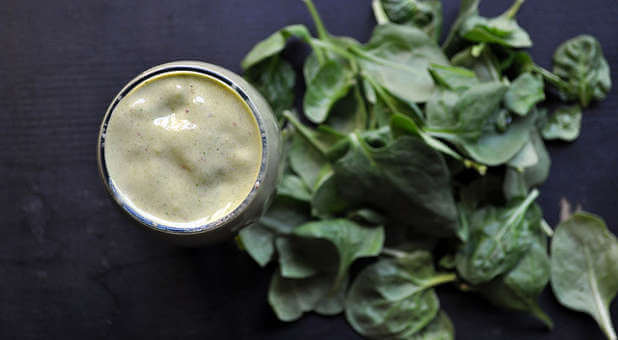If you have been diagnosed with diabetes, lowering and stabilizing your blood-glucose levels will be yours and your doctor’s goal. Thus the successful treatment and management of your condition may include oral medication (until you can stabilize your blood sugar with diet and exercise), insulin, if needed, and diet. Exercise also plays an important role. Many people with diabetes need to lose weight, and some must learn to control their cholesterol count and blood pressure.
A healthy eating plan can go a long way toward achieving the goals of lowering glucose levels in the blood, losing weight, and controlling cholesterol and blood pressure numbers. The rest of this book will help you figure out how to make the best possible eating choices for your personal situation.
Overall you should eat smaller portions than you may have been used to eating. You will need to learn what a serving size is for different foods and how many servings you need in a meal.
It is important to eat less fat. Choose fewer high-fat foods and use less fat for cooking. You especially want to limit foods that are high in saturated fats or trans fat, such as fatty cuts of meat, fried foods, whole milk and dairy products made from whole milk, “high carb” baked goods (cakes, candy, cookies, crackers, pies), salad dressings, lard, shortening, stick margarine, and nondairy creamers. And you want to eat a low-carb diet, eliminating sweets and refined carbohydrates. You also want to avoid fruit except for low-sugar fruit such as berries, lemons, limes, and green apples.
By eating less fat (along with no sugar) you may be able to reverse insulin resistance. A review of studies about bariatric surgery (surgery offered to people who are morbidly obese to reduce the size of their stomach and bypass a portion of the small intestine) proves this point. In many cases type 2 diabetes was reversed within days of the surgery—before much weight loss could have been achieved. Apparently the improvement results from the sudden decrease of triglycerides and fatty acids in the bloodstream, along with an immediate reduction of fats in liver and muscle cells.
You will need to concentrate on eating more fiber, found not only in whole-grain foods such as oatmeal; brown, black, and red rice; quinoa; millet; buckwheat; and kamut but also in a variety of low-sugar fruits and vegetables. Eat plenty of veggies from the groups below:
• Dark green veggies (e.g., broccoli, spinach, Brussels sprouts)
• Orange veggies (e.g., carrots, sweet potatoes, pumpkin, winter squash)
• Beans and peas (e.g., black beans, garbanzo beans, kidney beans, pinto beans, split peas, lentils)
At the same time you will need to avoid foods and beverages that are high in sugar, such as sweetened drinks (including juices that are 100 percent fruit-based, sodas, and tea or coffee sweetened with sugar). You should use less salt in cooking and at the table. Limit your consumption of foods that are high in salt, such as canned and packaged soups, canned vegetables, pickles, and processed meats.
About Those Carbs
You’ve probably heard of “glycemic index” and “glycemic load,” not to mention “counting carbs.” What do these terms mean?
Both glycemic index and glycemic load concern carbohydrates (carbs), which are one of the main types of nutrients in the human diet. Carbs with a simple chemical structure are called “sugars,” and they are found naturally in foods such as sugar, fruit juice, milk, yogurt, honey, refined flour products, sodas, maple syrup, brown sugar, agave, and milk products. “Complex carbs” (think starches and fiber) are found in whole grains, cereal grasses, vegetables, fruit, nuts, seeds, and legumes.
Your digestive system changes the carbohydrates you consume into glucose, a type of sugar that your body uses for energy.
Because simple carbs are more quickly digested and absorbed than complex ones, simple carbs can raise your blood-glucose levels faster and higher. People with diabetes must manage their blood-glucose levels. High blood glucose can damage tissues and organs, leading to heart disease, blindness, kidney failure, and other problems over time.
Glycemic Index and Glycemic Load
The glycemic index (GI) has been developed to show how the carbs in different foods raise blood sugar. White bread, for example, has a higher glycemic index than whole-grain bread, which contains more complex carbs. But it’s not just the types of carbs that matter. The more carbs you eat, the more your blood sugar rises.
That’s why researchers came up with the concept of glycemic load. It captures both the types of carbs in a food and the amount of carbs in a serving. Essentially it shows how a portion of a particular food affects your blood sugar. Many things affect the glycemic load (GL), including food processing, how ripe a fruit is, how a food is prepared, and how long it’s been stored. Because it’s calculated based on GI (as a percentage) multiplied by the carb count in an average serving, GL can be a much more useful number to go by.
Glycemic index and glycemic load aren’t things you’ll see on a label, so they’re not easy to determine. But you can learn the basics from the online publications of organizations such as the American Diabetes Association. {eoa}
Adapted from The Juice Lady’s Remedies for Diabetes, Copyright © 2016 by Cherie Calbom and published by Slioam/Charisma Media/Charisma House Book Group. To purchase a copy of the book, click here.







































